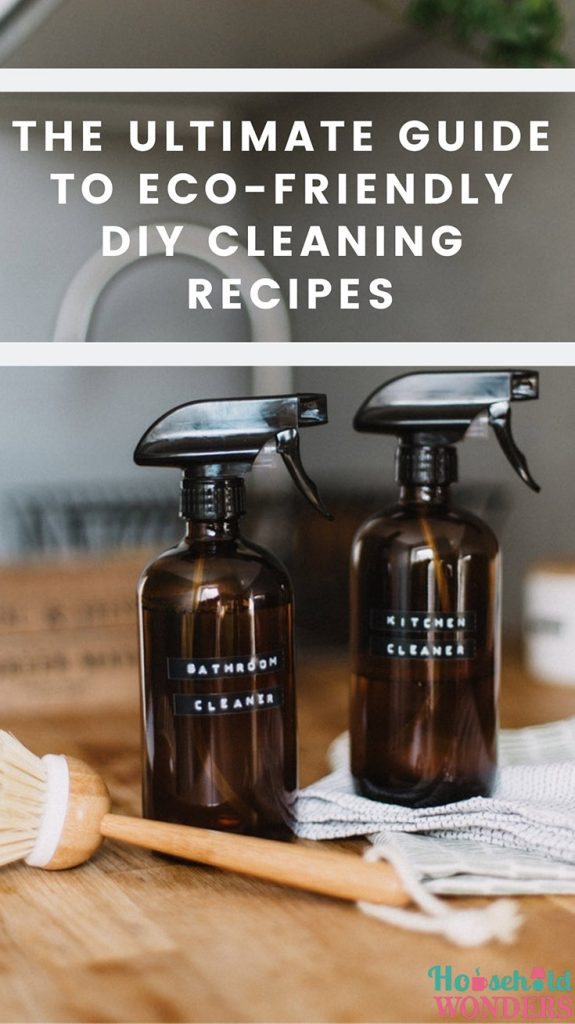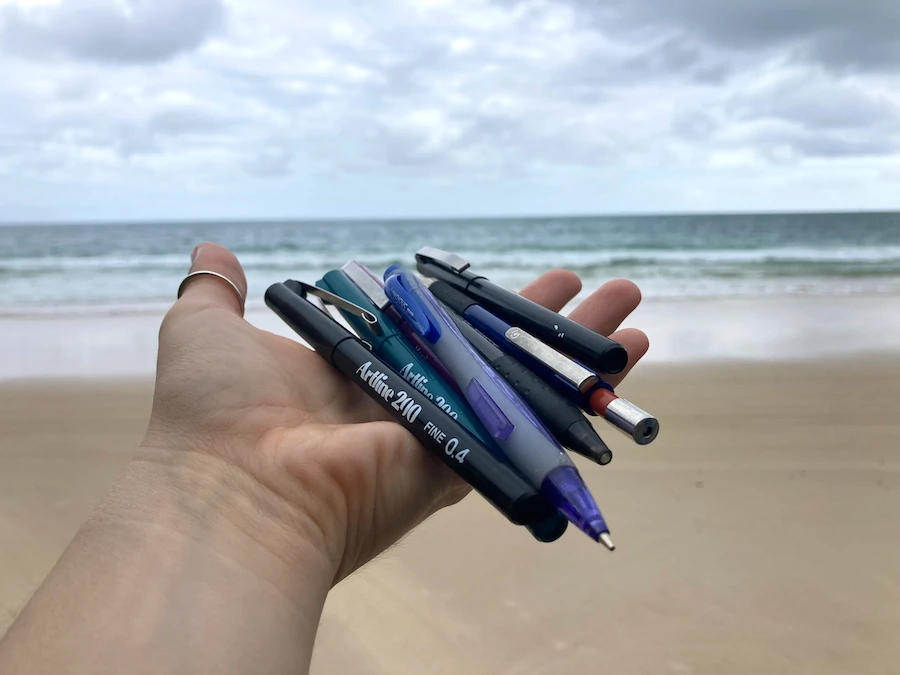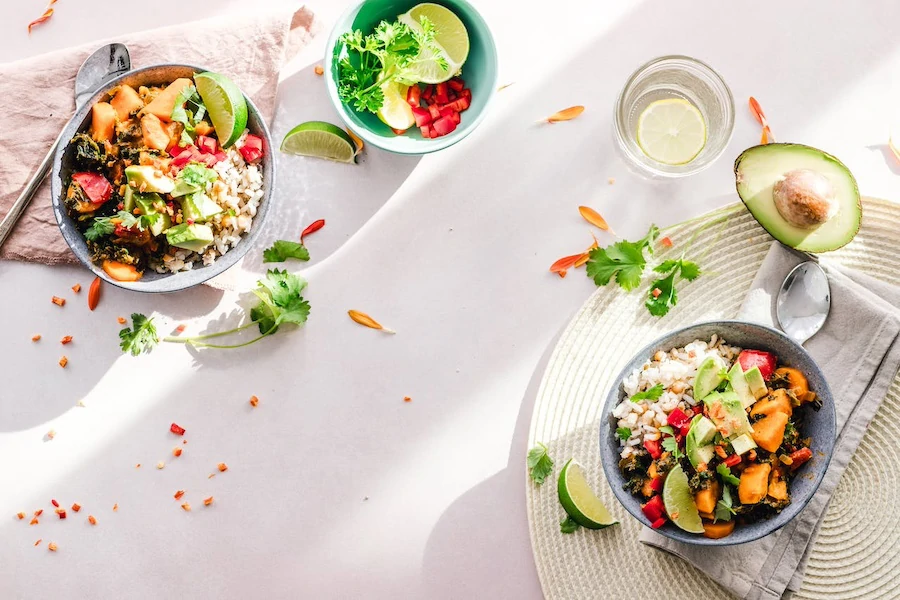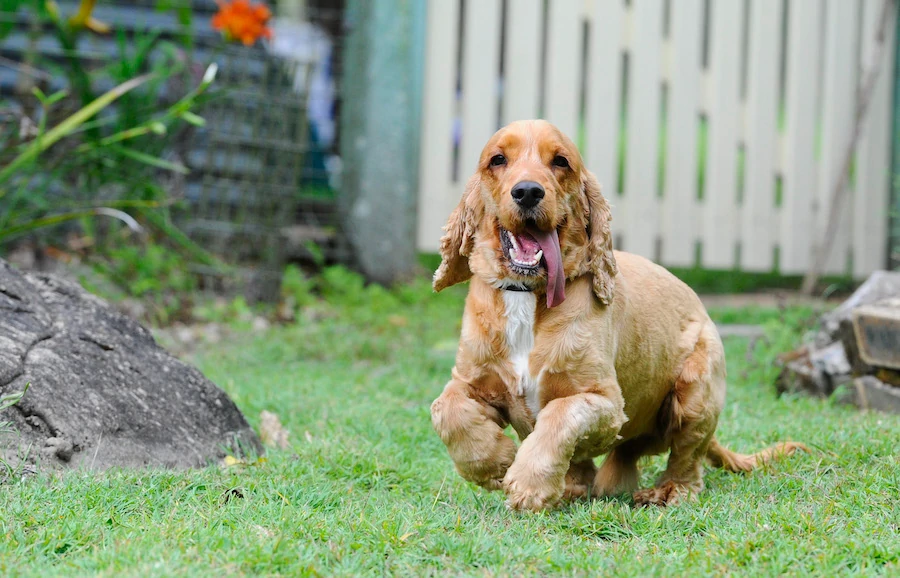Commercial cleaning products can be harmful to the environment and also heavy on your wallet. Many eco-friendly DIY cleaning products can be made from simple ingredients you may already have in your home.
I’ve done some research (and cleaning) to help make this guide for making your own DIY cleaning products. All of these recipes are eco-friendly, all-natural, and do not contain any toxic chemicals. I’ve separated these recipes into different areas of the house but many are interchangeable and have multiple uses. For most cleaning endeavors, you will find that your best friends are baking soda and white vinegar.
So what are some eco-friendly DIY cleaning recipes?
Eco-Friendly DIY Cleaning Recipes
Let’s first start with some eco-friendly DIY cleaning recipes for the kitchen:
DIY All-Purpose Cleaner
This is great for all kinds of hard surfaces and has a permanent spot on my kitchen counter! It will keep your countertops bacteria-free and the essential oils will also add a lovely scent to your cleaning.
- 1 cup white vinegar
- 1 tablespoon baking soda
- 1 cup water
- A few drops of essential oil of your choice
Add vinegar and baking soda into a clean spray bottle (glass is the most eco-friendly option). Add water and essential oil and gently mix. You can more essential oil until it reaches your desired scent. Spray the surface and use a cloth to wipe dry.
DIY Liquid Dish Soap
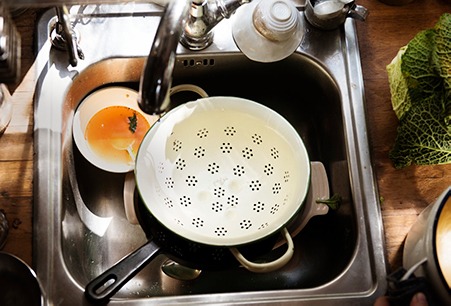
If you prefer to hand wash your dishes, this is an all-natural dish soap that will tackle even the toughest of dishwashing jobs. It makes great suds and will easily rinse off without any residue.
- 1 1/4 cups boiling water
- 1/4 cup castile soap bar
- 1 tbsp washing soda (use more for a thicker soap)
- 1/4 cup liquid castile soap
- 10-30 drops lemon or orange essential oil (optional)
Add grated castile soap to boiling water and stir until dissolved. Add washing soda and stir. Add liquid castile soap and stir.
Let the mixture cool, then add essential oils if desired. Transfer to a recycled soap dispenser (glass works best) and use it as regular dish soap.
The soap mixture will harden as it sets if it’s too thick to pour, just add a tiny bit of warm water and shake it to loosen up. The amount of washing soda you use will affect how thick the soap gets, so you can adjust accordingly.
DIY Dishwasher Detergent
This mixture will work with almost any dishwasher type and won’t leave any toxic chemicals or film covering your dishes.
- 1 cup borax
- 1 cup washing soda
- 1/2 cup citric acid
- 1/2 cup kosher salt
Add all ingredients together in a large reusable container and shakeup. Use 1 tbsp per dishwashing load. Each batch makes about 24 oz of detergent. Store in a reusable airtight container. To prevent the detergent from clumping, add one teaspoon of rice to help absorb moisture.
Bonus: White vinegar or lemon juice work as great rinsing agents. Just simply fill up the rinse aid compartment on your dishwasher.
DIY Reusable Disinfectant Wipes
These are an all-natural and eco-friendly alternative to disposable bleach wipes. They can be used all throughout the home but I like to have them on hand in the kitchen.
- 1/4 cup water
- 1/2 cup vinegar
- 1/4 cup rubbing alcohol
- 1 tsp liquid dish soap
- 10 drops of essential oil
- Empty wipe container or an old coffee canister
- 15 – 20 squares of cloth (old dish towels, washcloths, or cut up t-shirts)
Mix together the vinegar and water in a small bowl. Add drops of essential oils. I like to use lemon or orange along with tea tree oil. Stir until well mixed.
Fold and place square cloths into the container. Pour your mixture over the cloths and into the container. Once soaked and saturated they are ready for use. After using you can run through the laundry, soak, and reuse again.
DIY Oven Cleaner
I know I’m guilty of letting my oven go uncleaned far too long, but they should be cleaned every 3-6 months. This recipe can be easily before cleaning so no need to store it away.
- 3/4 cup baking soda
- 1/3 cup salt
- 1/3 cup water
Add ingredients into a bowl and mix into a thick paste. Use more or less water as required for consistency of the paste. Spread this paste evenly throughout the oven interior but avoid any openings or bare metal. Let sit overnight. Spray with vinegar until baking soda foams and wipe clean with a damp cloth. If there are any tough spots, rub with steel wool.
DIY Drain Cleaner
This is a simple fix if you have a clogged or drain that smells. For tough clogs, you may have to resort to other options, but I find that if I do this regularly, I don’t find the need to use a chemical drain cleaner.
- 1/2 cup baking soda
- 1/2 cup white vinegar
- Kettle of boiling water
Sprinkle baking soda down the disposal followed by the white vinegar. This mixture will cause fizzing and make some noise. Let this mixture work for about an hour then pour boiling water down the drain to clear residue and buildup. Depending on you badly your drain is clogged, you may need to repeat this process again.
Caution: Only use this method with metal plumbing. Plastic pipes can melt if boiling water is used. Do not use this method after trying a commercial drain opener, the vinegar can react with the chemical drain cleaner to create dangerous fumes.
DIY Garbage Disposal Cleaner
If you have a garbage disposal unit, this quick 2-step cleanse will have it back at new.
- 2 cups ice
- 1 cup rock salt
- Lemon or lime wedges
Fill drain with two cups of ice. Pour the cup of salt over the ice cubes. Run cold water and turn on garbage disposal until the ice has melted. This mixture will help loosen the grime and debris from the garbage disposal blades.
Run the garbage disposal with water on. Add lemon or lime wedges one at a time into the disposal. The citrus fruit will help clean and deodorize your drain.
DIY Wood Cutting Board Cleaner
Cutting boards come in many different wood material types and sizes. The acid in lemon works as a great cleaner for most types of hardwoods.
- 1/2 lemon
- Coarse salt
Sprinkle the cutting board with coarse salt. Rub the slice of lemon across the cutting board, squeezing lightly to release lemon juice. This will disinfect the surface. Let sit for 5 minutes then scrape dirty liquid off with. Give the surface a final rinse with a wet sponge. This will also work for bamboo cutting boards.
Cleaning the Bathroom
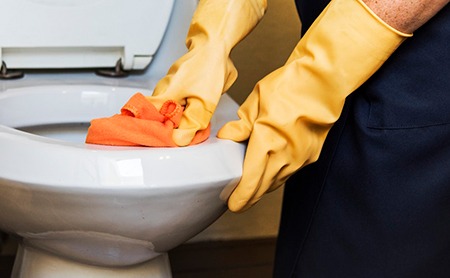
Bathroom cleaning can be tedious but many of the thrifty DIY cleaning recipes that apply to the kitchen can also be used in the bathroom. Here are some eco-friendly DIY cleaning recipes for the bathroom:
DIY Toilet Bowl Cleaner
Keeping your toilet bowl clean doesn’t require a fancy store-bought product.
- 1/4 cup baking soda
- 1 cup vinegar
Mix baking soda and vinegar and pour it into the toilet bowl basin. Let it sit for several minutes. Scrub with a brush and rinse by flushing. Borax and lemon juice will also work as an alternative recipe.
For rust or those hard to remove stains, spray with additional vinegar and let the mixture sit on the toilet bowl basin overnight.
DIY Glass and Mirror Cleaner
Use this recipe also on your glass windows throughout your home.
- 1 tbsp cornstarch
- 1/2 cup white vinegar
- 1/4 cup isopropyl (rubbing) alcohol
- 1 1/2 cups water
- 8-10 drops essential oil of choice (mint or lemon work great)
Mix ingredients into a glass spray bottle. Shake well to ensure the cornstarch is fully mixed in, this will help prevent leaving streaks on the glass. This solution can be sprayed onto any glass surface and wiped clean with a microfiber cloth. The rubbing alcohol will evaporate quickly and the essential oils should cover up any vinegar smell. This batch will make 16oz of cleaning solution but you can adjust as you see fit.
DIY Bathtub and Shower Cleaner
Regular use of this recipe can alleviate stains building up in the shower or bathtub. You will also not have to worry about anything toxic coming in contact with your skin after cleaning.
- 1 cup baking soda
- 1/2 cup salt
- 1/2 cup washing soda
- 5 drops of essential oil for scent (optional)
Pour ingredients into jar or bowl and stir until well-mixed. You can easily make a shaker by putting the mixture into a mason jar and poking holes on top of the lid.
Lightly wet the tile or surface with water. For really bad stains you can use white vinegar. Sprinkle the powder on the stains and let sit for 5 minutes. Scrub with a sturdy brush until clean.
DIY Mold Deterrent
Mold in a bathroom a common problem and can be harmful if left untreated. This often occurs in tile grout or any small corners in your bathtub or shower.
- 1/2 cup hydrogen peroxide (3%)
- 1 cup water
- 5 drops of essential oil for scent (optional)
Mix ingredients into a glass spray bottle and spray on areas with any mold buildup. Let it sit for at least an hour. Scrub vigorously with a brush and rinse after. You may have to repeat this process multiple times for tough mold stains. Old toothbrushes work great for scrubbing the grout in between tiles and tough to reach spots. Be sure you thoroughly rinse all the solution away before using your shower or bathtub again.
DIY Air Freshener
Many candles and air fresheners can contain harmful chemicals that will stay trapped in areas of your home. Try out this all-natural alternative.
- 3/4 cup water
- 2 Tbsp rubbing alcohol or vodka
- 15-20 drops of essential oil combinations
Combine all ingredients into an empty glass spray bottle and mix very well. The vodka or alcohol will help the essential oils and water to mix better and help the air freshener dry faster. If you don’t have alcohol, real vanilla extract can be a substitute. This recipe makes a small batch but you can double or triple the amounts if you want to really get rid of some odors.
Have fun and experiment with different essential oil combinations. Essential oils have the tendency to break down plastic, so a reusable glass spray bottle is your best option. Make sure you give your spray bottle a good shaking up before using it again.
Cleaning the Laundry Room
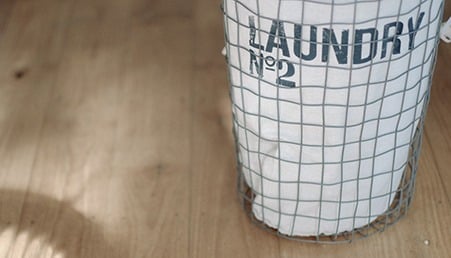
The laundry room can be a place where toxic chemicals are used far too often. These chemicals not only go into our environment and waterways but also the clothes on our backs and the bedsheets we sleep on. Here are some eco-friendly DIY cleaning recipes for the laundry room:
DIY Laundry Detergent Powder
This recipe is best made in bulk, but try it out with a small batch first and make sure it works for your washing machine and laundry.
- 1 cup washing soda
- 1 cup Borax
- 1 bar of Castille Soap (5oz)
Grate the Castille bar soap or mix in a food processor until finely ground. There are many all-natural Castille bar soaps available on the market in a variety of natural scents.
In a large bowl or mason jar, mix washing soda and borax with the grated soap. Store in a reusable container. Quart or half-gallon mason jars work great. Use 1 tbsp for light loads and 2 tbsp for heavier loads.
DIY Liquid Laundry Soap
This recipe may take slightly longer to make than the powder soap (above) but will depend on your washing machine type and personal preference.
- 1 bar of castille soap (5oz)
- 2 cups Borax
- 2 cups washing soda
- 4.5 gallons of hot water
Grate one bar of Castille soap with a grater or food processor. Place grated soap in a pan with 2 quarts water on low heat, stirring regularly until soap is completely dissolved.
Place 4.5 gallons of hot water in a 5-gallon bucket and stir in borax and washing soda until completely dissolved.
Pour the soap mixture from the pan into the 5-gallon bucket and stir until mixed well. Cover and leave overnight. Stir until smooth and pour into more accessible reusable containers. Swing top glass bottles work very well but will require a funnel to get the soap inside without making a mess. Use ½ cup liquid for light loads and 1 cup for heavier loads.
DIY Clothing Stain Remover
Stay away from ammonia and bleach, not only is it toxic but it really stinks!
- 8 Tbsp hydrogen peroxide (3%)
- 1 Tbsp dish liquid soap
- 1 Tbsp baking soda
Combine all ingredients into a small glass jar and mix well. Apply the solution directly to stain and scrub gently with your finger or an old toothbrush. Allow the stain remover to sit for at least 15 minutes or up to an hour for bad stains. I find that this usually does the trick for the toughest of stains, including those pesky olive oil stains!
DIY Fabric Softener and Dryer Sheets
Commercial fabric softeners leave a slippery film on your fabrics making them feel soft. This chemical film makes contact with your skin when you wear clothes and sleep on your bedsheets. There are lots of opportunities for your skin to absorb these toxic chemicals, so an all-natural and homemade option will be safer.
- 1/8 cup vegetable glycerin
- 2 cups white vinegar
- 2 cups water
- 10-20 drops of essential oil for scent (optional)
Combine water, white vinegar, and glycerin into a glass jar. Add essential oil and shake to mix well. Lavender and eucalyptus make a great fragrance. Use 1/4-1/2 cup depending on the laundry load size.
The white vinegar will help deodorize the laundry and the vegetable glycerin will soften the fabric. Any essential oil you add will give your laundry an added fragrance. Use more if you desire a stronger scent to your fabrics.
To make dryer sheets, use small cotton cloths or cut up an old t-shirt into 5×5 inch squares. Place them inside of the fabric softener container to soak and absorb the mixture. Wring out the liquid before placing it into the dryer. After the drying load is done, place the dryer sheet back into the container to soak again.
Cleaning the Living Room
When I think of cleaning the living room I think of more organization and tidying up but there are several situations where you will need reliable cleaning supplies. Here are some eco-friendly DIY cleaning recipes for the living room:
DIY Dusting Spray
Dust can be a culprit in nearly every part of the home. Use this recipe on various dust-covered surfaces.
- 1/3 cup vinegar
- 1 cup water
- 2 tsp olive oil
- 10-15 drops of essential oil
Combine all ingredients into an empty glass spray bottle. Shake vigorously to ensure the essential oil mixes well with the water. The vinegar will cut through grease and grime and also disinfect the surface while the olive oil will leave your furniture with a shine. Spray directly onto furniture surface or onto microfiber towel first.
DIY Wood Polish Spray
This will work for various wood types but make sure you test a small area of your wood furniture surface before using it.
- 1 cup olive oil
- 1/4 cup white vinegar
- 3-5 drops of essential oil
Combine all ingredients into an empty glass spray bottle and mix well. Spray directly onto a lint-free cloth and wipe onto furniture for light polishing. For heaving polishing, spray directly onto the wood surface and buff to a shine.
I like using citrus scents as they pair well with wood surfaces. Orange and grapefruit essential oils are great options. Be sure to shake well before using again and store replace your solution monthly to prevent it from going rancid.
DIY Carpet Deodorizer
If you have pets you will understand the importance of deodorizing your carpets. Use this recipe to bring back a pleasant smell to your carpets and rugs.
- 2 cups baking soda
- 30 drops of essential oil
Combine baking soda and essential oil into a large mason jar. Seal tightly and shake well to ensure baking soda has fully mixed with the essential oil. Sprinkle liberally onto the carpet and allow to sit for at least 1-2 hours, but overnight will see better results. Vacuum carpet thoroughly and pass several times until powder has gone.
DIY Carpet Stain Remover
The sooner the better for stains, make it a priority to treat them right away.
- 1 tsp dishwashing liquid
- 1 tbsp white vinegar
- 1 tsp baking soda
- 1 cup warm water
Combine dishwashing liquid, white vinegar, and warm water into a clean glass spray bottle. Add baking soda then quickly screw on the spray bottle top. The vinegar and baking soda should bubble and react.
Vacuum over the stain first and gently scrub with the abrasive side of the sponge. Spray the stain on the carpet generously then gently rub or dab with a towel. Continue gently blotting to absorb the moisture from the carpet until the stain is removed.
DIY Couch Stain Remover
There is no single recipe that fits all upholstery types, so it depends on what type of material you are dealing with:
- Fabric upholstery – 1/4 cup white vinegar, ¾ cup warm water, and 1 tbsp liquid dish or castile soap. Mix well and place into a spray bottle.
- Leather upholstery – 1/2 cup olive oil and 1/4 cup vinegar. Mix well and place into a spray bottle.
- Synthetic upholstery – 1/2 cup of vinegar, 1 cup of warm water, and 1/2 tbsp of liquid dish soap or castile soap. Mix well and place into a spray bottle.
If the stain is wet, pat dry with a cloth first and avoid any rubbing as this can make the stain worse. Spray the stained area and gently scrub with a soft cloth. Use a second cloth moistened with clean water to remove the soap and pat dry. Repeat this process until the stain is removed.
Cleaning Floors

Although this isn’t a separate part of the house, its an important surface all throughout the home so it deserves its own section. Many floor cleaners and polishes can be notorious for containing strong odors and toxic chemicals, so an all-natural eco-friendly option will spare you any harm. Here are some eco-friendly DIY cleaning recipes for different floor surfaces:
- Wood – mix a 1/4 cup vinegar with a half-gallon of warm water. To be on the safe side, test a small portion of your wood surface first to avoid ruining any finish you may have. For polishing wood floors, apply a thin coat of a 1:1 mixture of vegetable oil and vinegar and rub it into the wood floor surface. For damp-mopping wood floors, mix equal amounts of white distilled vinegar and water. Add 15-20 drops of essential oil of your choice for added scent. Stir thoroughly to mix well.
- Painted wood – mix 1 tsp of washing soda into 1-gallon hot water.
- Vinyl & linoleum – mix 1 cup vinegar and several drops of olive oil in 1 gallon of warm water. Use this sparingly on linoleum.
- Brick and stone tiles – mix 1 cup white vinegar with 1-gallon water. Rinse with clean water after washing.
Cleaning Metals
You may have many different metals throughout your home that need cleaning. Here are some common metals and some quick eco-friendly DIY recipes:
- Aluminum – cream of tartar and water can be mixed to make a cleaning solution for aluminum. Wipe and clean with a soft cloth
- Brass or bronze – mix a solution of lemon juice and baking soda or vinegar and salt. Polish with a soft cloth on any tarnished spots. Rubbing in a small out of ketchup will also work wonders!
- Cast iron – soap and water can strip the seasoning on your cast iron skillet, especially if left soaking for long periods. After using, immediately rinse your cast iron with hot water and an unsoaped sponge. Make a paste with coarse salt and water to remove any excess food still left on the skillet surface. Dry with a towel and coat with a layer of oil.
- Chrome – chrome can be polished with lemon oil, vinegar, or the shiny side of a sheet of aluminum foil.
- Copper – soak a cloth in boiling water with 1 tbsp salt and 1 cup of white vinegar. While still hot, apply to copper. Let cool then wipe clean with a cloth. Just as with bronze and brass, a small dab of ketchup will also eliminate any tarnish.
- Gold – clean using an old toothbrush and mix a paste of salt, vinegar, and flour.
- Silver – line the bottom of a dish with a sheet of aluminum foil. Mix 1 tbsp of baking soda into a quart of hot water. Soak the silver for 30 minutes. Buff with a dry cloth.
- Stainless steel – for stainless steel kitchenware, mix 4 tbsp of baking soda in 1 quart of water and polish using a soft cloth. Wipe dry with a clean cloth after. For stainless steel sink fixtures, use baking soda on a cloth to polish. Rinse and wipe dry using a clean cloth after.
Safe and Healthy Cleaning Tips
Now that you have all the ideas for eco-friendly cleaning in your home, here a few cleaning tips and habits you can practice to make sure you stay safe and healthy:
- Get some fresh air – feeling stuffy? Many homes may not be built to allow the proper flow of air. Open the windows and doors often to allow the exchange of indoor and outdoor air. This will allow any chemicals, fumes, or bacteria to escape and give you a refreshing breath of fresh air. If it’s cold weather, a quick five minutes will do the trick without letting too much heat escape.
- Clean top to bottom – when cleaning, start from the top of the room near the windows and curtains and work your way down. This will allow any dust to settle before you vacuum the carpet and clean the floors.
- Bite the dust – remove extra clutter and items that collect dust. Keep the humidity in the house low and vacuum regularly. Wash bedding and linens regularly in hot water and use pillowcase and mattress covers to fend off dust mites. Having a “shoe-free” home will also help with minimizing dust and dirt accumulation.
- Clean up after furry friends – if you have an indoor and outdoor pet you will have to clean up any tracked in dirt or surprise accidents that may happen. Keep your loved ones brushed to reduce excess furballs and dust that may accumulate.
- Ditch that sponge – stay away from typical synthetic sponges that are made of polyester or plastic. Use alternatives such as reusable linen dishcloths, a cleaning brush for wiping dishes, and a copper scour pad for scrubbing pots. Many brands now make cellulose sponges that are 100% biodegradable and naturally more absorbent than synthetic sponges.
- Use eco-friendly cleaning products – if you cannot make your cleaning products homemade and prefer commercial cleaning products, look for ones with all-natural and organic ingredients. Many big-name commercial brands now market “green” alternatives. Avoid products that contain ammonia, chlorine, petroleum-based chemicals or VOC’s (volatile organic compounds). In addition to headaches and respiratory irritation, these all can cause a laundry list of health problems.
Conclusion
I hope that these DIY eco-friendly cleaning recipes will inspire you to get creative and make some of your own. These recipes are all very simple to make and will be more cost-effective than purchasing commercial cleaning products, especially if you make them in large quantities. As you can see many of the recipes call for essential oils, the Cliganic Organic Essential Oils Set (link to read reviews on Amazon) is a great place to start along with some glass spray bottles (link to read reviews on Amazon).
Cleaning can be one of my least favorite things to do, but it also feels wonderful to keep my home safe and do my part by preventing any harmful chemicals from entering the environment.
So what are you waiting for? Get out there and give some of these recipes a try!
